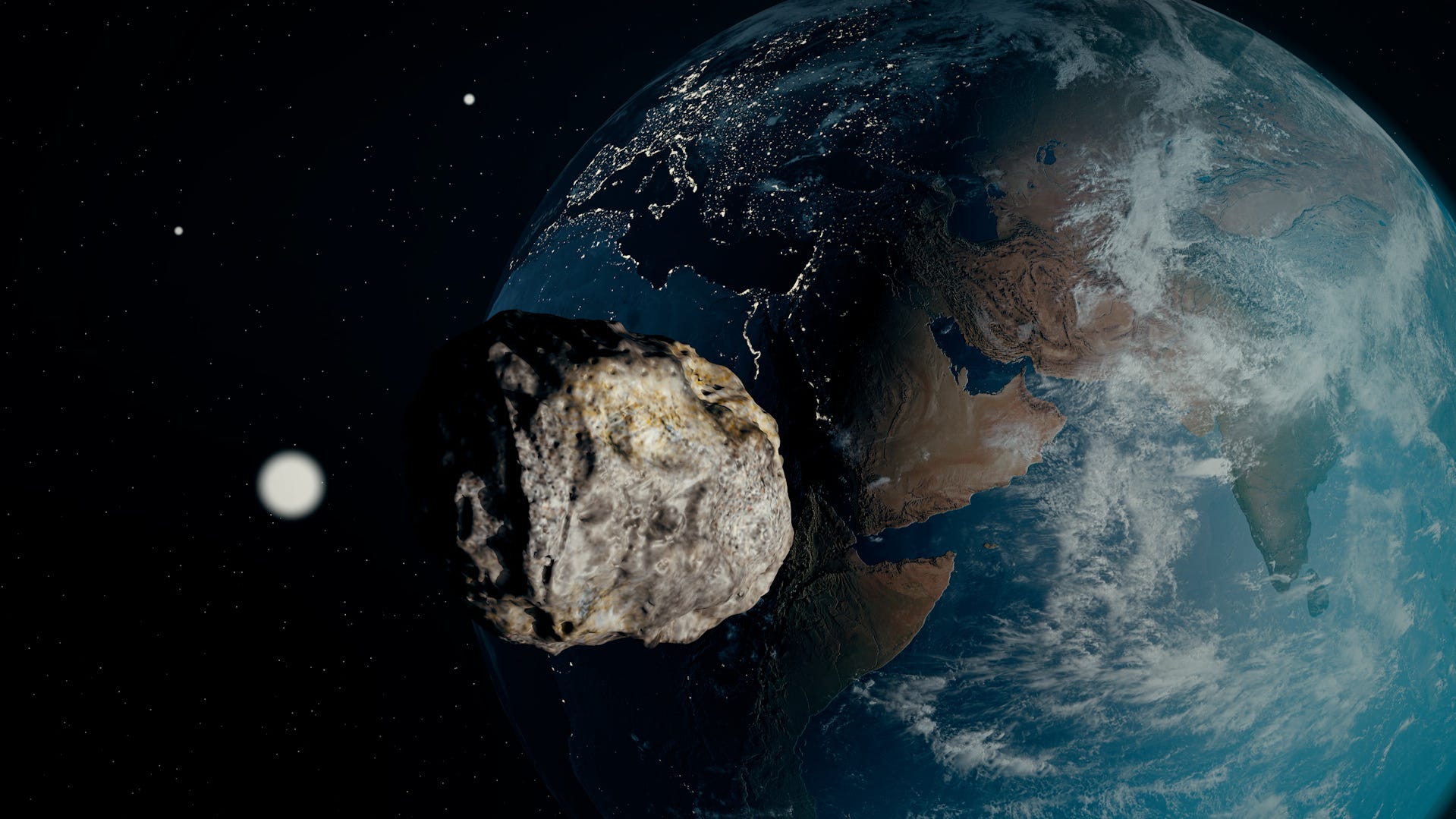Remember the 'mini-moon' last year? Study finds it was likely just a chunk of the actual moon
The small rock captured the world's attention when it came close enough to Earth between September and November to be classified as a near-Earth object.

A chunk of space rock that visited near Earth's orbit last year was widely referred to as a "mini-moon." Turns out the lunar-inspired moniker may have been more accurate than we realized.
The "mini-moon" designation, which is used to refer to objects that temporarily float near Earth at a certain distance or speed, has nothing to do with celestial origin or composition. But as serendipity would have it, the cosmic rock in question may have literally been a hunk of the moon, according to a new study.
The small rock captured the world's attention when it came close enough to Earth between September and November to be classified as a near-Earth object. While the asteroid never posed a threat to our planet, it did intrigue astronomers, who rushed to study it before it bid farewell and continued on its way.
Because its orbit around the sun closely matches Earth's, astronomers determined that the "mini-moon" likely originated from nearby in our solar system.
Now, research published this month in the Astrophysical Journal Letters suggests the object many called a "mini-moon" is composed of lunar rock ejected into space after an impact thousands of years ago on the moon's surface.
What was the 'mini-moon?'
The asteroid, known as 2024 PT5, was first spotted Aug. 7 by astronomers using the NASA-funded Asteroid Terrestrial-impact Last Alert System, or ATLAS.
Measuring about 33 feet in diameter, the object never actually entered Earth's orbit and didn't meet the qualifications to officially qualify it as a "mini-moon." Still, the nickname stuck.
From Sept. 29 to Nov. 25, the object orbited on a horseshoe trajectory that brought it close to Earth before it receded away.
2024 PT5 may have been flung from moon's surface
During the object's visit, Teddy Kareta, an astronomer at Lowell Observatory in Arizona, was among those who sought to catch a glimpse of it while they could.
On Aug. 16, Kareta and his colleagues spotted the object with the Lowell Discovery Telescope and the NASA Infrared Telescope Facility in Hawaii.
By observing the way the object moved through space, the team quickly ruled out human-made space debris from things like aging satellites and old rocket launches.
The researchers studied how the sunlight reflected off the small rock to discover it didn't match that of any known asteroid type. Instead, the reflected light more closely matched rocks from the moon.
The discovery led them to conclude that 2024 PT5 probably was flung from the moon's surface after one of the many collisions that has left the moon's surface with its iconic craters.
“We had a general idea that this asteroid may have come from the moon, but the smoking gun was when we found out that it was rich in silicate minerals – not the kind that are seen on asteroids but those that have been found in lunar rock samples,” Kareta said in a statement in a NASA news release announcing the findings.
“It looks like it hasn’t been in space for very long, maybe just a few thousand years or so, as there’s a lack of space weathering that would have caused its spectrum to redden.”
Space rock not first from lunar surface
The discovery of 2024 PT5 makes it the second space rock whizzing through the cosmos with a likely lunar origin.
Asteroid 469219 Kamo’oalewa was found in 2016 orbiting the sun, suggesting it may also have been ejected from the lunar surface after a large impact.
What's more, astronomers believe that still more lunar space rocks are waiting to be discovered as telescopes become more capable of detecting smaller asteroids.
If a lunar asteroid could be linked to a specific impact crater on the moon, studying it could unveil secrets about the pockmarked lunar surface.
“This is a story about the moon as told by asteroid scientists,” Kareta said in a statement. “It’s a rare situation where we’ve gone out to study an asteroid but then strayed into new territory in terms of the questions we can ask of 2024 PT5.”
Eric Lagatta covers breaking and trending news for Paste BN. Reach him at elagatta@gannett.com